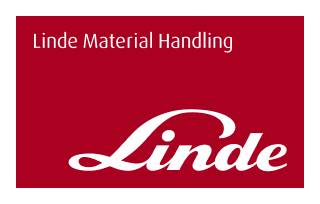- Blog
- General


While the upfront price may influence a purchase decision, the true cost of a forklift emerges over time — especially when things go wrong. A breakdown without support can bring your operations to a grinding halt, impacting your bottom line. This is where structured maintenance, warranty clarity, and dependable backup separate reliable suppliers from potentially unreliable ones.
Many, if not most, businesses approach forklift maintenance reactively. But this short-term thinking often leads to longer, costlier downtime. Barry Parks, Service Operations Manager—VIC at Linde Material Handling, explains:
“Regular maintenance is more effective than reactive repairs for two reasons:
It’s not just about changing parts. It’s about anticipating wear and tear, and scheduling proactive maintenance while limiting business disruption.
“If we notice a part requiring some maintenance, we can proactively plan the repair. However, if you simply get it fixed at the time of issue without having a preventative maintenance plan, you are relying on someone being available at the time, having the right parts with them in that moment, and in most instances, you’ve gone past the wear and tear part of the component into the breakdown part.”
Stuart Morgan, Service Operations Manager—QLD, adds that it’s also a matter of safety and compliance.
“Machine service intervals are based on duration — either 12 months or after a certain number of operating hours, depending on environments and applications. That’s an opportunity for an experienced technician to assess certain components, with the intention to ensure that it’s compliant and safe until the next service interval.”

Preventative maintenance keeps forklifts running while also allowing customers to plan ahead financially.
“Having a structured preventative maintenance agreement 1.) provides you with a safety net from a WorkSafe point of view; and 2.) it provides you a blueprint for financial control,” says Barry.
With OEM-trained technicians and insights into common wearable components, these plans allow businesses to forecast repairs and avoid unpleasant repair surprises.
“Once we know what the wearable components are, we are stocked with spare parts and knowledge which means we can provide expert feedback as to when the repair will be required, book it in, and work with the customer to ensure maximum uptime of their fleet.”
A warranty is only useful if it’s reliable, transparent, and enforceable. Barry outlines the risk of vague or unsupported warranties:
“If you haven’t looked after the machine, serviced it or taken proper care of it, then the risk of equipment failure increases. And if you are buying from an independent seller, what if that person is not in business to honour the warranty?”
“The difference between that and dealing with a reputable supplier is knowing that the larger company will be here tomorrow and in five years’ time. We’re subject to stricter laws when it comes to compliance and upholding warranties.”
Stuart emphasises that transparency is everything:
“If a warranty doesn’t have a solid structure and an organisation to back that up, it raises questions like, ‘How valid is the warranty? What does it cover? Is it clear or are there any denying clauses or caveats that you need to be aware of?’”
He explains that there should be consistency and clarity across the board.
“Transparent warranties validate a service offering. All customers should be treated equally, whether they buy a single machine or hundreds of machines. There should be no ambiguity on what is and isn’t covered.”
Downtime doesn’t just cost money. It impacts operations, productivity, and customer relationships. When you choose a forklift provider, you’re not just buying the equipment—you’re investing in the people, processes, and support behind it.
And as Barry puts it:
“You are paying for the support network behind the supplier to ensure you get the absolute best service available at any given point in time.”
Keep up to date with the latest in material handling reliability, safety and innovation by visiting our Content Hub and subscribing to our quarterly newsletter. And for the latest news and updates on all things Linde, follow us on LinkedIn.
VISIT CONTENT HUB